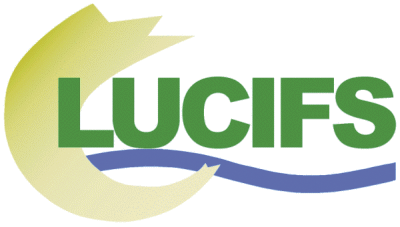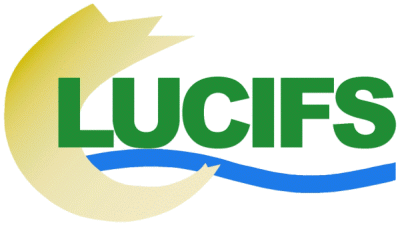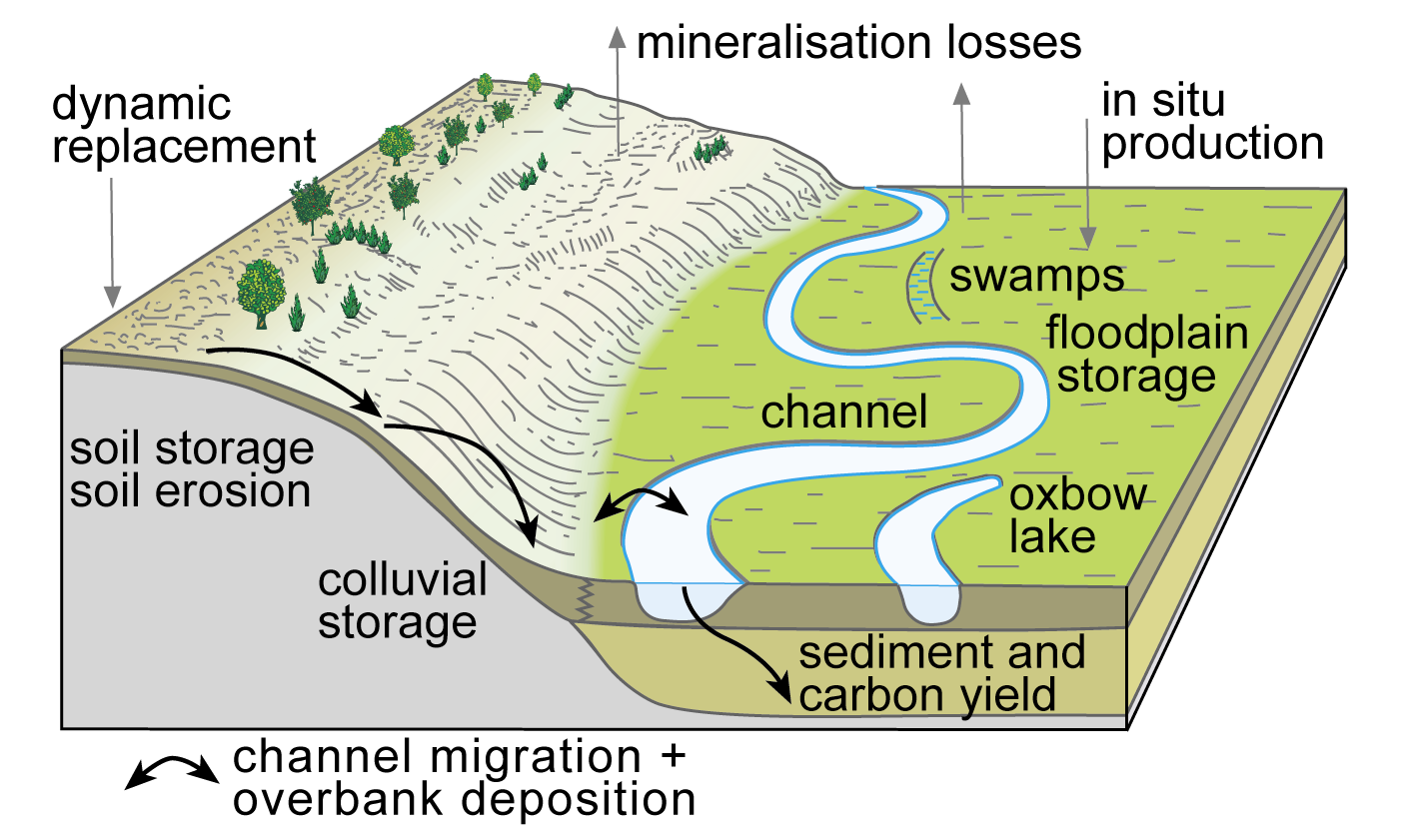- Home
- Publications
- PAGES Magazine
- Open PHAROS Workshop On “Sediment and Carbon Fluxes Under Human Impact and Climate Change”
Open PHAROS workshop on “Sediment and carbon fluxes under human impact and climate change”
Thomas Hoffmann, G. Erkens, G. Verstraeten, H. Middelkoop and A. Lang
PAGES news
20(1)
49
2012
 |
Thomas Hoffmann1, G. Erkens2, G. Verstraeten3, H. Middelkoop2 and A. Lang4
1Department of Geography, University of Bonn, Germany; thomas.hoffmann uni-bonn.de
uni-bonn.de
2Department of Physical Geography, Utrecht University, The Netherlands
3Division of Geography, University Leuven, Belgium
4School of Environmental Science, University of Liverpool, UK
LUCIFS Workshop, Bern, Switzerland, 28-30 July 2011
Sediment-burden carbon fluxes represent a considerable yet insufficiently understood component of the global carbon (C) cycle. The contribution of soil erosion and sediment transport on hillslopes and in channels to greenhouse gas emission and/or long-term C storage remains largely unknown. The major aim of the workshop was to bring together leading and early-career scientists focusing on C and sediment fluxes from different viewpoints (e.g. soils, hillslopes, fluvial and limnic systems). Perspectives for unravelling long-term sediment-burden C fluxes and the prospects of establishing the relationships between C and sediment fluxes were discussed. In addition, concepts, methods and regions that are best suited for establishing Holocene sediment-carbon fluxes were identified. The workshop was organized by the PAGES working group LUCIFS (Land Use and Climate Impacts on Fluvial Systems) under the Focus 4 Themes “Sediment” and “Carbon”. A total of 19 researchers from different disciplines (ecology, geology, geomorphology and limnology) and countries (Belgium, Ethiopia, Germany, Japan, Switzerland, The Netherlands, UK and USA) contributed to the workshop.
Discussions on the first day focused on the contribution and importance of single system components along the sediment/carbon flow path (e.g. hillslopes, floodplains and lakes) and their interconnections. Kristof van Oost (Louvain, Belgium), Rolf Aalto (Exeter, UK), and John Boyle (Liverpool, UK) gave keynotes speeches on organic C storage and erosion on hillslopes, floodplains and lakes. The second day’s session focused on the wider implications of environmental changes (including climate change and human impacts) on sediment-burden C fluxes. Simon Mudd (Edinburgh, UK) and Jed Kaplan (Lausanne, Switzerland) presented ideas on quantifying long-term soil production and biogeochemistry to use as baseline information for modern soil processes. They also discussed Holocene C flux and land use changes. Jane Willenbring (Pennsylvania, USA) gave a presentation on quantifying long-term C loading from anthropogenic erosion. On the third day, Fritz Schlunegger and Fabian Van den Berg (Bern, Switzerland) led a fieldtrip to showcase subglacial erosion, the formation of inner valley gorges and knickpoint retreat in glacial hanging valleys.
All presentations highlighted the current overly simplistic consideration of hillslopes and channels in models of the global C cycle; hillslopes are often represented as simple engines that release C through soil formation and subsequent erosion, and fluvial channels are often viewed as pipes that passively transport carbon from the hillslopes to the oceans. During the workshop it became clear that sediment-burden C fluxes are altered by various processes at different spatial and temporal scales. Sediments eroded at hillslopes may be stored several times under different environmental conditions along the flow path to the oceans. During storage, organic C can either decompose or build up depending on the specific environmental conditions. Four key mechanisms determine the coupled sediment/carbon flux: i) dynamic replacement of eroded C due to soil formation, ii) increased mineralization of C due to aggregate breakdown during transport, iii) protection of eroded organic material through burial and iv) organic matter complexation (Fig. 1). On short timescales (ca. 50 years) soil erosion seems to have only limited effects on atmospheric CO2-concentrations, while on longer timescales (centuries to millennia) the C protection through burial dominates. This shows the clear need to define the relative importance of each key mechanism for specific timescales and environmental conditions. Furthermore, the discussion groups identified major gaps in understanding of feedback mechanisms between soil erosion and C fluxes, such as interdependence of soil productivity and ecological diversity. Such feedbacks may irreversibly alter the C cycling and might even be more important than direct fluxes. The participants of the workshop stressed the need for comparative studies on direct and indirect effects of soil erosion on the C cycle. These are needed to evaluate the effects of human-induced soil erosion in areas with different geology, climate and land use history.
Figure 1: Sediment-burden carbon fluxes on hillslopes and in floodplains; representing key mechanisms as mentioned in the text.

